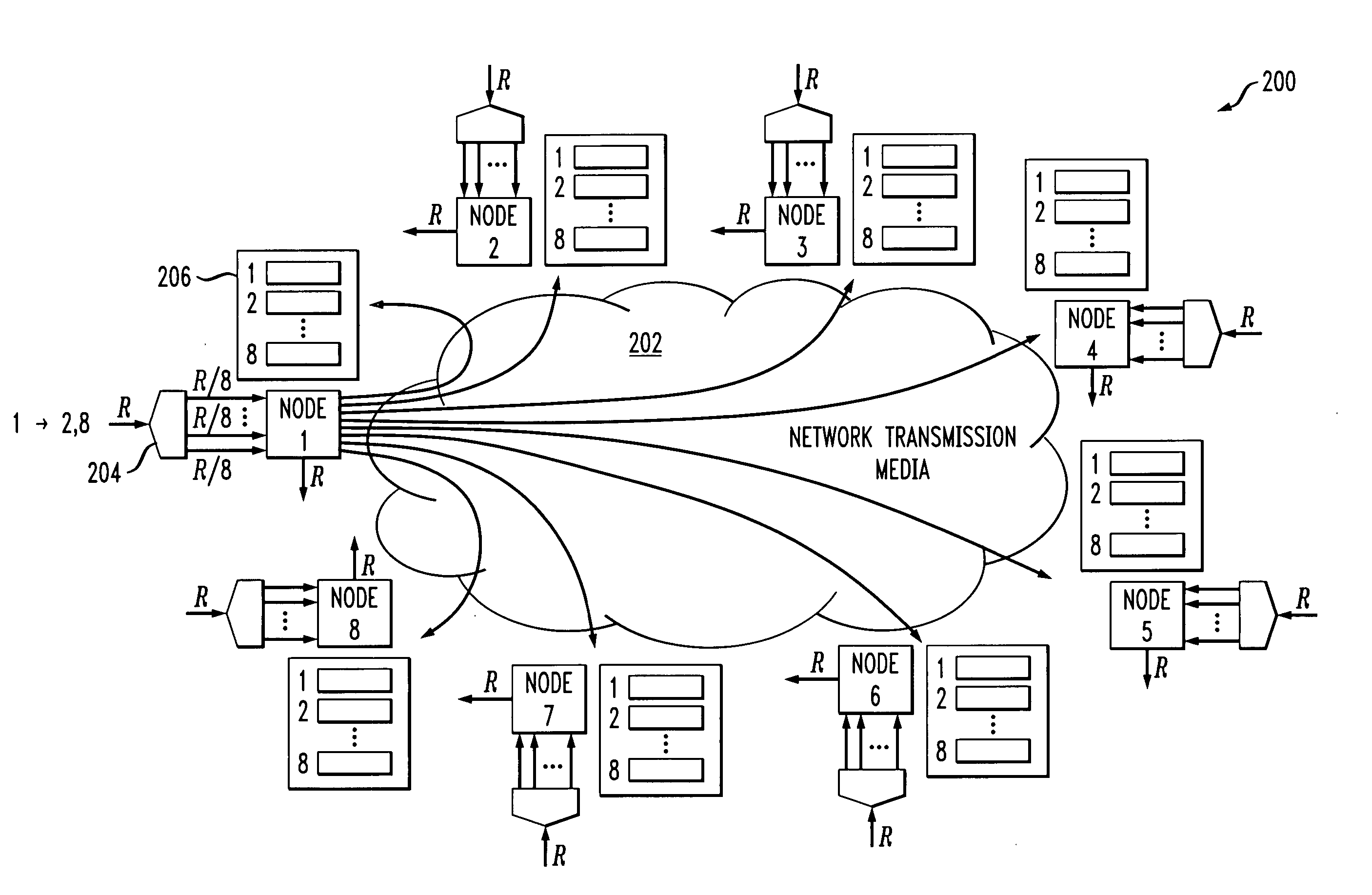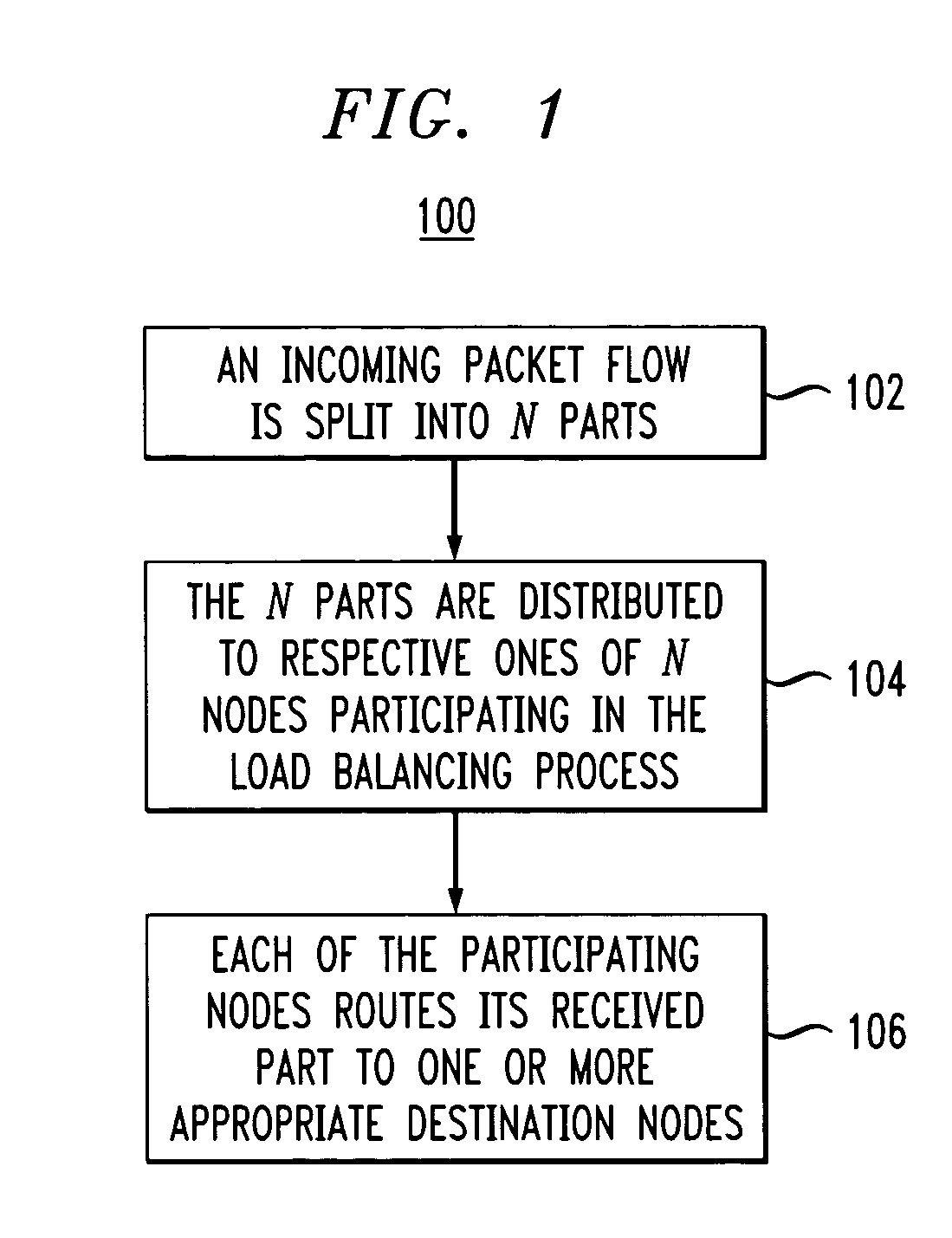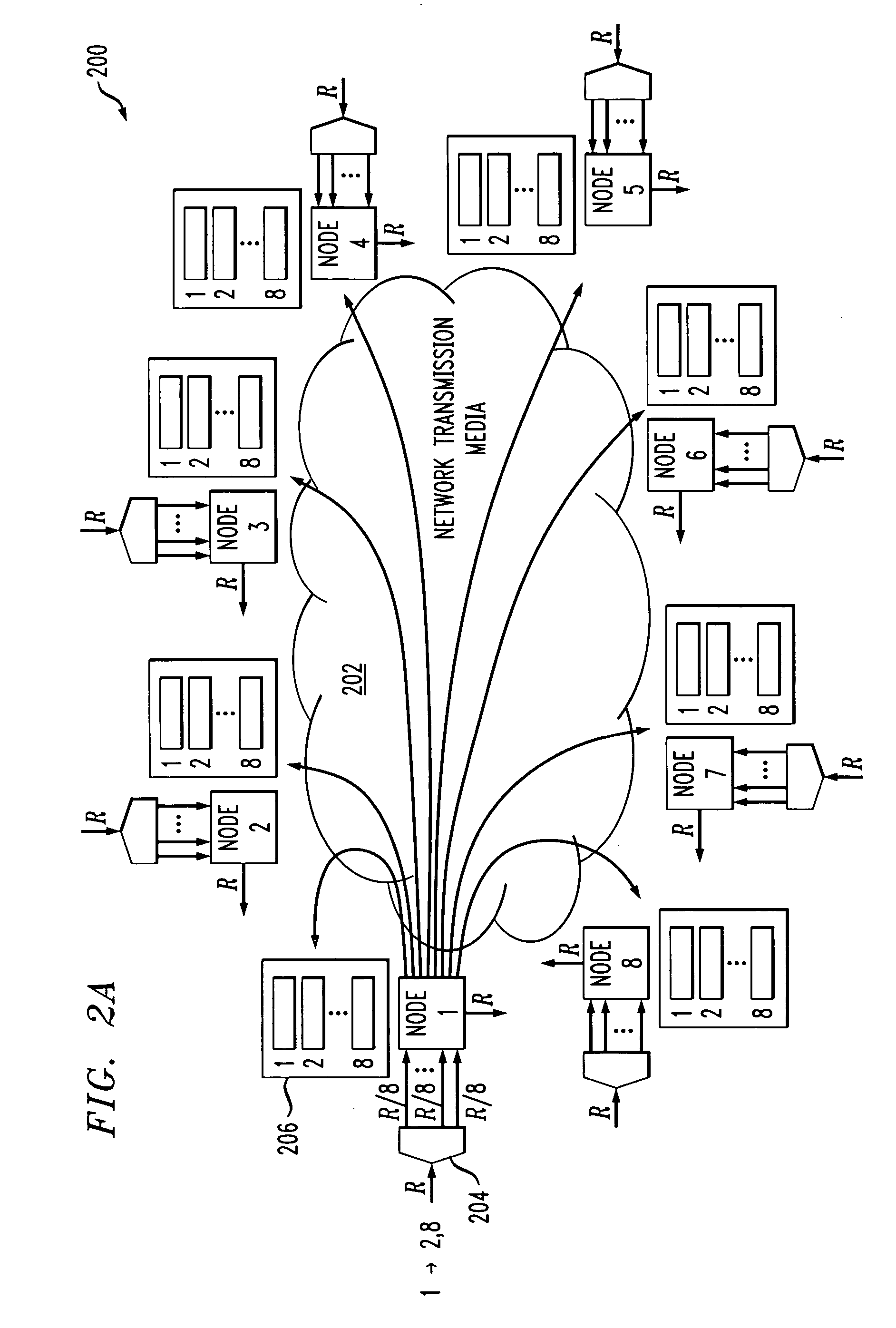Packet reorder resolution in a load-balanced network architecture
- Summary
- Abstract
- Description
- Claims
- Application Information
AI Technical Summary
Benefits of technology
Problems solved by technology
Method used
Image
Examples
Embodiment Construction
[0023] The invention will be illustrated herein in conjunction with an illustrative embodiment which utilizes a load-balanced network architecture of the type described in the above-cited U.S. patent Ser. No. 10 / 785,352. It is to be appreciated, however, that the invention is not limited to the particular network architecture and associated load balancing process of the illustrative embodiment, but is more generally applicable to any network application in which it is desired to provide improved packet reordering.
[0024] For example, although well suited for use with EoS data traffic, with or without virtual concatenation, the invention can be used with any type of traffic flow.
[0025] Referring now to the flow diagram of FIG. 1, a load balancing process in an illustrative embodiment of the invention will be described. The process in this example includes steps 102, 104 and 106. It will be assumed for purposes of simplicity and clarity of illustration that the network comprises N no...
PUM
 Login to View More
Login to View More Abstract
Description
Claims
Application Information
 Login to View More
Login to View More - R&D
- Intellectual Property
- Life Sciences
- Materials
- Tech Scout
- Unparalleled Data Quality
- Higher Quality Content
- 60% Fewer Hallucinations
Browse by: Latest US Patents, China's latest patents, Technical Efficacy Thesaurus, Application Domain, Technology Topic, Popular Technical Reports.
© 2025 PatSnap. All rights reserved.Legal|Privacy policy|Modern Slavery Act Transparency Statement|Sitemap|About US| Contact US: help@patsnap.com



